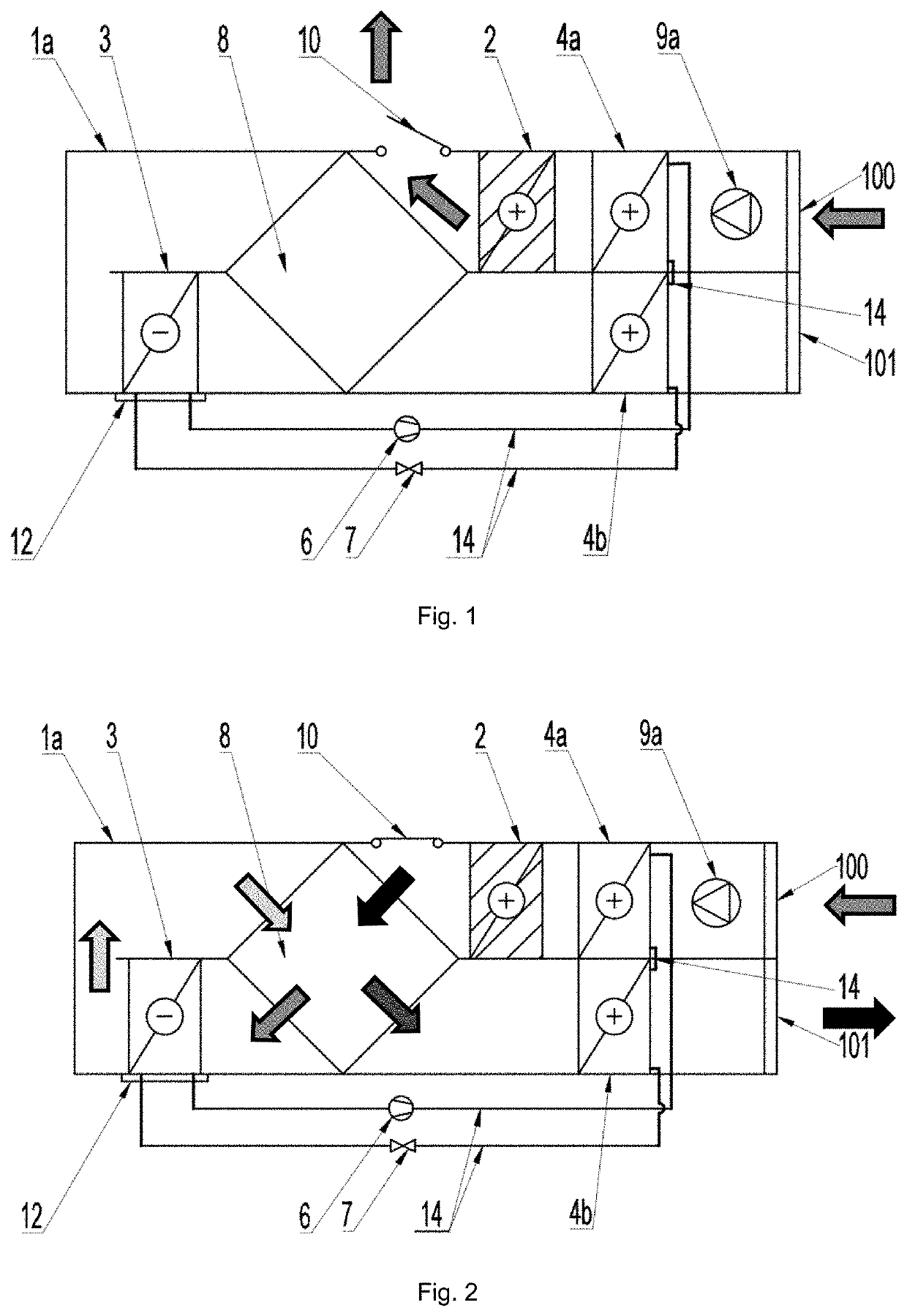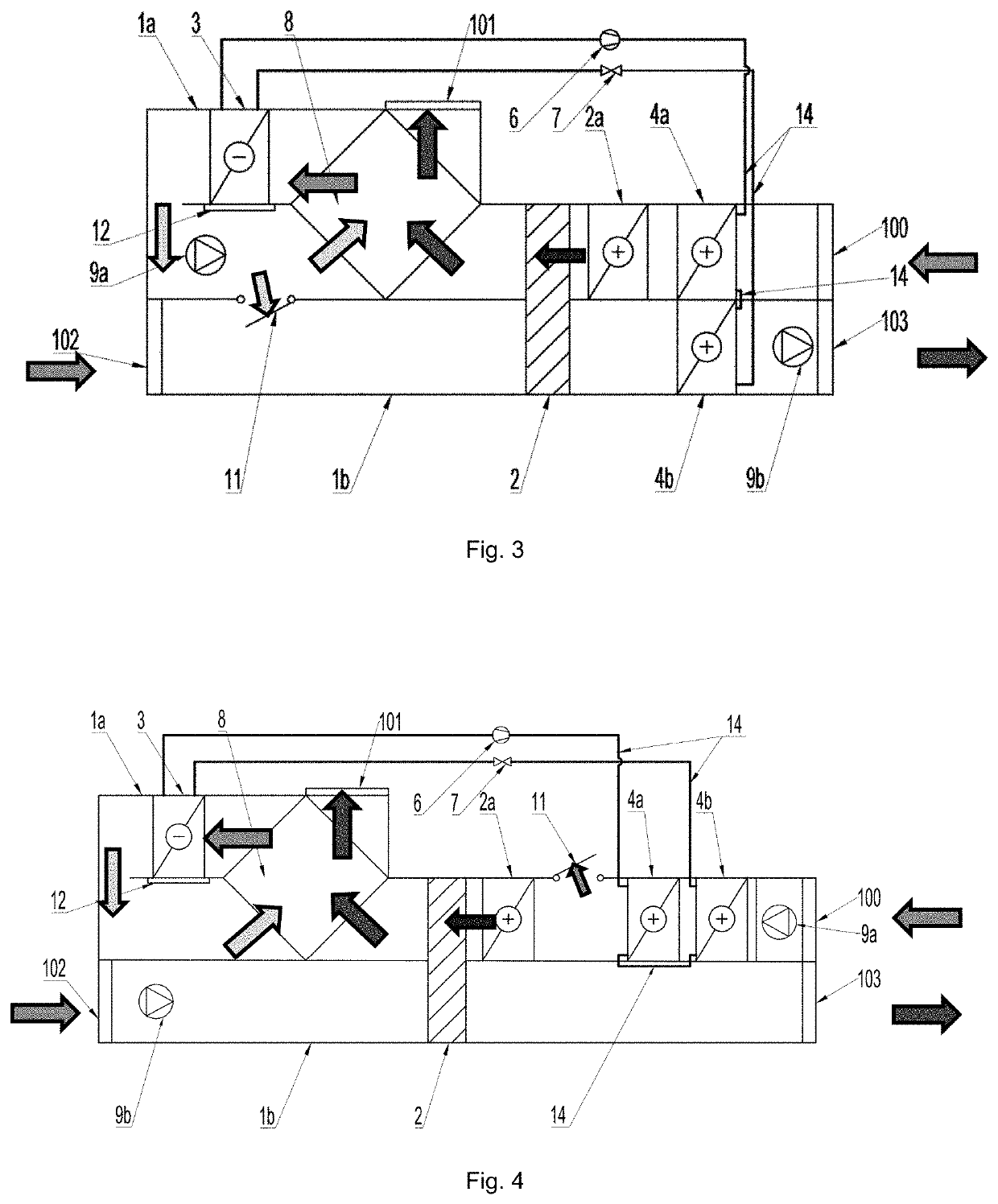Compact apparatus for extracting water from air
a compact apparatus and air technology, applied in water conservation, separation processes, membrane technology, etc., can solve the problems of high energy consumption, low water production, and high energy consumption, and achieve the effect of reducing the number of contaminated water sources
- Summary
- Abstract
- Description
- Claims
- Application Information
AI Technical Summary
Benefits of technology
Problems solved by technology
Method used
Image
Examples
Embodiment Construction
[0027]The advantageous embodiments described below illustrate only some of the many possible solutions falling within the protection scope of the invention and illustrate the idea of the invention. These are only selected advantageous embodiments, which in no way limit the scope of protection of the invention.
[0028]FIGS. 1 and 2 depict an exemplary embodiment of a compact air water extraction apparatus according to the present invention with one sorption, typically lamellar heat exchanger with an internal source of energy.
[0029]We will first describe the design of the apparatus and then its function in more detail.
[0030]It can be seen that the apparatus comprises a first air duct 1a having a first opening 100 of the first air duct for air intake and / or exhaust and also a second opening 101 of the first air duct for air intake and / or exhaust, whereas in this first air duct 1a are positioned: a cooler 3 and a first suction device 9a for drawing air into the first air duct 1a, and at l...
PUM
| Property | Measurement | Unit |
|---|---|---|
| volume | aaaaa | aaaaa |
| temperature | aaaaa | aaaaa |
| specific humidity | aaaaa | aaaaa |
Abstract
Description
Claims
Application Information
 Login to View More
Login to View More - R&D
- Intellectual Property
- Life Sciences
- Materials
- Tech Scout
- Unparalleled Data Quality
- Higher Quality Content
- 60% Fewer Hallucinations
Browse by: Latest US Patents, China's latest patents, Technical Efficacy Thesaurus, Application Domain, Technology Topic, Popular Technical Reports.
© 2025 PatSnap. All rights reserved.Legal|Privacy policy|Modern Slavery Act Transparency Statement|Sitemap|About US| Contact US: help@patsnap.com


